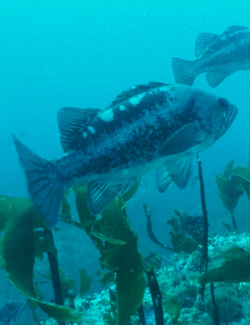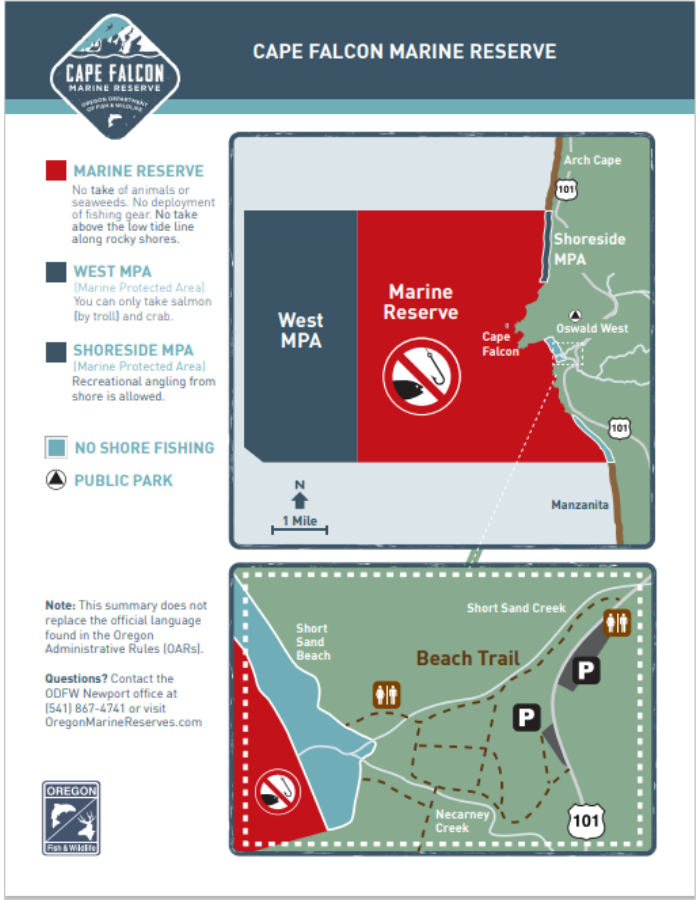Cape Falcon Marine Reserve
Oregon's northernmost marine reserve, this is an important site for marine conservation, scientific research, and recreation
Seeking to expand land-to-sea connectivity along the northern Oregon Coast, North Coast Land Conservancy (NCLC) adopted the Cape Falcon Marine Reserve program on Feb. 1, 2022.
The purpose of the Cape Falcon Marine Reserve Program of NCLC is to educate on and advocate for the abundant values the Cape Falcon Marine Reserve site has to offer the state of Oregon.


What is Cape Falcon Marine Reserve?
Cape Falcon Marine Reserve is located on the Oregon North Coast, just off of Oswald West State Park, near the town of Manzanita. This is Oregon’s northernmost site and includes a marine reserve plus two MPAs.
Established in 2016, Cape Falcon is one of five sites within Oregon Department of Fish & Wildlife’s marine reserve system.
ODFW Marine Reserves Program staff, scientists, and other partners use a variety of research tools to monitor marine reserves. They tailor which tools are used at the Cape Falcon site based on the site’s unique characteristics.
The reserve’s size, habitats, and depths—as well as what fishing activities used to take place here—all play into determining which tools researchers use.
Take a deep dive into the marine reserve by visiting ODFW’s Marine Reserves website and perusing the Cape Falcon Marine Reserve Site Management Plan.

LOCATION AND SIZE
The marine reserve is located just offshore from the popular Oswald West State Park. Hiking trails atop the Cape provide views out over the reserve.
Visitors enjoy beach walking, surfing and viewing seabirds and other wildlife from Short Sand Beach. Nearby towns and ports include Astoria, Warrenton, Seaside, Cannon Beach, Manzanita, and Garibaldi.
COMPOSITION
At Cape Falcon the seafloor is dominated by sand providing ideal habitat for crabs and other animals that like soft bottom habitats. In shallower waters, the reserve has small isolated patches of rock where we find black rockfish, lingcod, kelp greenling, and buffalo sculpins.
Along the shore, you’ll find rocky intertidal habitats to the north and south of Short Sand Beach where you can spot mussels and sea anemones attached to the rocks.
HISTORY
The process that led to Oregon’s five marine reserve sites involved multiple phases and coastal community members, ocean users, and other interested Oregonians working with state decision makers to design and site marine reserves and protected areas in locations that would provide ecological benefits while minimizing adverse social and economic impacts to ocean users and coastal communities.
Baseline monitoring began at Cape Falcon Marine Reserve in 2014. Harvest restrictions began in 2016.
Read more about the history of Oregon’s marine reserve sites.